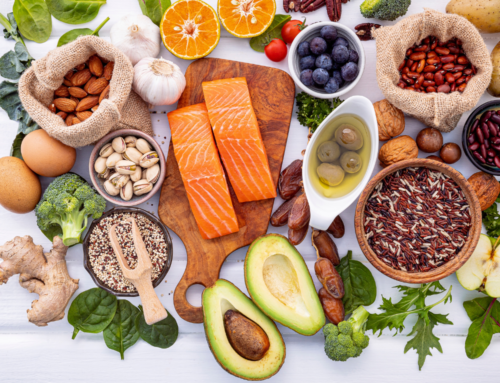Amid the vast world of leafy greens, watercress has recently risen to the top. The Centers for Disease Control and Prevention (CDC) recently declared watercress the most nutritious food, beating other well-known contenders like kale and spinach. But what gives watercress this superfood status?
Watercress is a semi-aquatic plant native to Europe and Asia. Found predominantly near springs and slow-moving water bodies, its small, round leaves and crisp texture have been a flavorful addition to salads and sandwiches for years.
The green’s nutrition is nothing short of impressive. Watercress is packed with vitamins A, C, and K and antioxidants that neutralize free radicals in the body. Watercress boasts calcium, magnesium, and potassium, ensuring a well-rounded profile for bone health, muscle function, and blood pressure regulation.
One standout component in watercress is its content of isothiocyanates. These compounds have gained attention in the scientific community for their potential to combat certain types of cancer. They work by neutralizing carcinogens and inhibiting the growth of cancer cells, offering another layer of health benefits from this peppery green.
While kale and spinach have often been front and center in nutrition discussions, here’s how watercress measures up:
•Vitamin K: With more than the daily recommended amount of Vitamin K in a single serving, watercress stands out. Vital for bone health and blood clotting, it surpasses even the mighty kale in this department.
•Antioxidants: Spinach’s high antioxidant levels are widely acknowledged, but watercress offers a denser and more varied mix of these vital compounds, providing an even more robust defense against oxidative stress.
•Caloric Value: Watercress’s lower caloric footprint than other superfoods makes it an ideal choice for those monitoring calorie intake.
Looking to bring watercress into your culinary repertoire? Here are five tempting recipes:
1. Watercress Salad: Pair fresh watercress with sliced strawberries, toasted almonds, and a honey-lemon dressing for a light, tasty side dish.
2. Watercress Soup: Blend watercress with vegetable broth, sautéed onions, garlic, and a touch of cream for a warm, comforting soup.
3. Watercress Pesto: Blend watercress, garlic, pine nuts, olive oil, and parmesan to produce a delectable pesto perfect with pasta or atop grilled chicken.
4. Watercress Sandwich: Fresh watercress layers beautifully with cream cheese, smoked salmon, and cucumber slices between whole grain bread.
5. Stir-fry with Watercress: Quickly fry watercress with your choice of tofu or chicken, seasoned with garlic, ginger, and soy sauce, for a filling main dish.
Watercress’s recent recognition by the CDC has brought it into the limelight, and rightly so. With its rich nutritional profile, including the potent isothiocyanates, watercress is not just another leafy green – it’s a superfood champion.
Login
0 Comments
Oldest







![🍂✨ It’s Time for Thanksgiving Reflections! ✨🍂
Hey everyone!
Today, I’m inviting you to join a very special journey on my blog - “A Thanksgiving to Remember: Embracing the Bittersweet Beauty of Change.” This year, Thanksgiving is more than just a holiday; it’s a reflection on life’s fleeting moments, the ‘lasts’ that sneak up on us, and the joy of new beginnings.
👩👧👦 Whether it’s the nostalgia of past Thanksgivings, the thrill of new traditions, or the bittersweet feeling of an empty chair at the table, we all have stories that make this time of year unique.
➡️ Read the full post [Link in Bio and Story] and let’s share the warmth and wisdom this season brings.
📲 I would love to hear from you – your traditions, memories, and what Thanksgiving means to you. Let’s make this Thanksgiving one for the books!
#ThanksgivingMemories #ShareYourThanksgiving #FamilyTraditions #BlogPost #HeartfeltStories #KidsGrowUp #HolidayAfterLoss](http://hearthandhighlight.com/wp-content/plugins/instagram-feed-pro/img/placeholder.png)